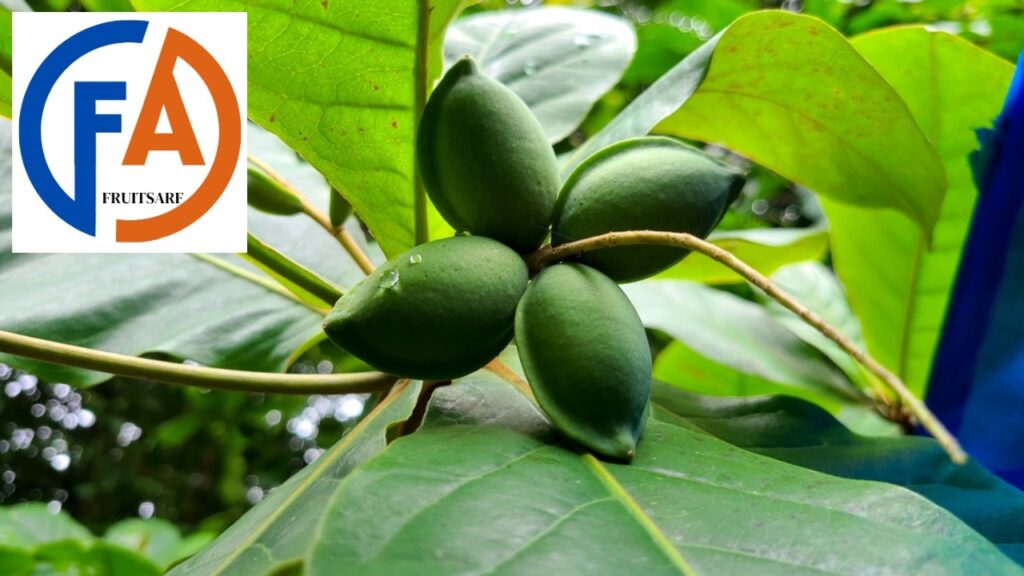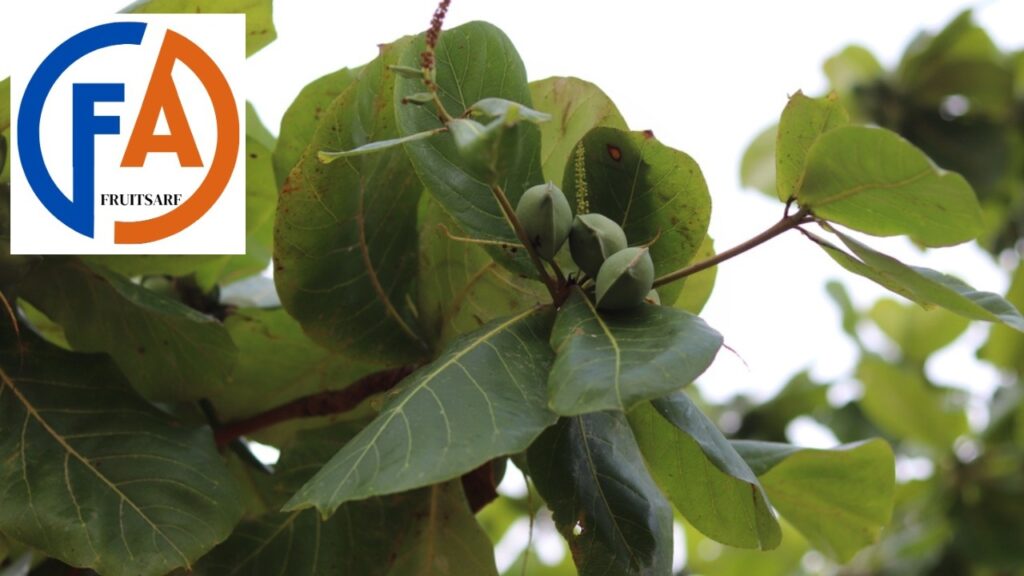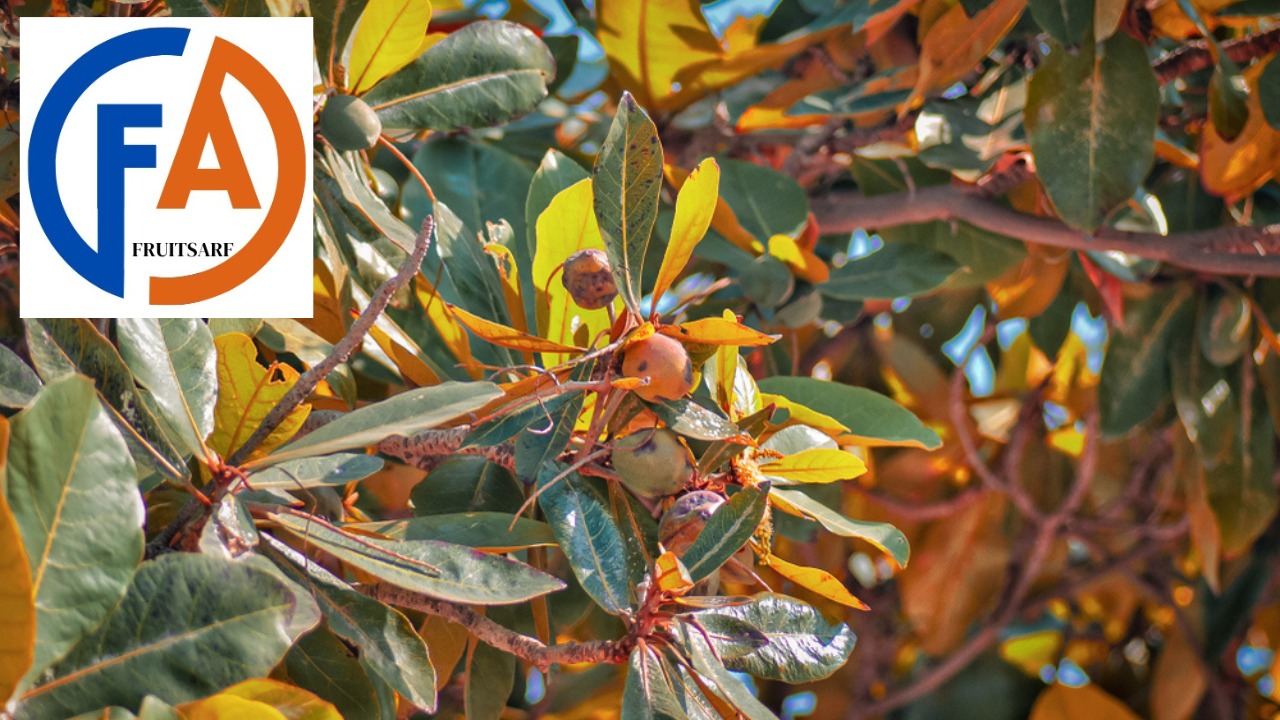The Comprehensive Guide to the Tree of Badam
The “tree of badam,” which is also called the almond tree, is an interesting plant that has been grown for hundreds of years. Almonds are not only tasty but they are also very good for you.
The tree of badam which is also called the Indian almond tree or Terminalia catappa. It is a tropical tree with shiny and broad leaves that looks different from other trees. It comes from Southeast Asia but has spread to other warm places around the world.
The tree of badam does best in sandy coastal areas and can be found along streets and beaches where it provides much-needed shade. The Badam tree can get up to 35 meters tall and is easy to spot because its horizontal branches are arranged in a unique way that makes it look like a pagoda.
When it falls, its big oval leaves turn bright red and add a splash of colour to the scene. The nuts on the tree have a hard shell that you can eat. The nuts are high in protein and oil. People like these nuts, which are sometimes called Indian almonds, both raw and baked.
The tree of badam also has valuable wood that is used for building and making furniture because it lasts a long time. The tree is also very useful for medicine. Its leaves, bark and nuts are traditionally used to treat a wide range of illnesses, from skin problems to stomach problems.
Thetree of badam is good for the environment because it gives birds and bugs a place to live. Its deep roots help keep the dirt from washing away which makes it a good plant for both seaside and urban areas. People like the tree of badam because it looks nice, helps the environment and makes money.

What is Almond?
Trees that grow almonds have seeds that are used to make almonds. They are eaten as nuts and in many different kinds of food around the world.
Tree of Badam Origins:
The Middle East and South Asia are where the almond tree came from. It is now grown a lot in Mediterranean areas like California.
Nutritional Value of Almonds:
Almonds are rich in vitamins, minerals and antioxidants. They are especially high in vitamin E, calcium and fiber.
How Much Water Does It Take to Grow an Almond?
Almonds require a large amount of water to grow, making water control important for almond farmers.
Water Requirements Tree of Badam:
More or less 1.1 gallons of water are needed to grow one almond. In places like California that are prone to drought, this high water use is a worry.
Water-Saving Techniques:
To save water, farmers use methods like drip watering and planting to cut down on how much they use.
Caribbean Almond Tree
The Caribbean almond tree, whose scientific name is Terminalia catappa, is not the same as the common almond tree. However, it has its own uses and benefits.
Characteristics of the Caribbean Almond Tree:
This tree of badam is known for its shiny, broad leaves and unique fruit which looks like an almond but tastes and feels different.
Physical Description Tree of Badam:
The Caribbean almond tree can grow up to 35 meters tall and has a wide smooth crown.
Leaf and Flower Characteristics:
It has big, shiny leaves that turn bright red before they fall. The flowers are small white and smell good.
Fruit and Seed Features:
The tree of badam makes oval green fruits that turn yellow or red when they’re ready to eat. The seeds inside are called almonds.
Habitat and Growth Conditions:
The Caribbean almond tree does best near the water, can handle salt and likes sandy soils that drain well.
Uses of Caribbean Almonds:
Almonds from the Caribbean are used in traditional medicine and are also a famous ingredient in local recipes.
Unripe Almonds
Unripe almonds, which are also called “green almonds,” taste and feel different from almonds that are fully ripe.
Harvesting Unripe Almonds:
Most of the time these are picked early in the spring before the shell dries and becomes tough.
Culinary Uses:
People like to eat unripe almonds raw because they taste so fresh and tangy. They are often used in salads and pickles.

What Are Bitter Almonds?
A type of nut called bitter almonds has a chemical called amygdalin in them that can be harmful if eaten in large amounts.
Differences between Sweet and Bitter Almonds:
People often eat sweet almonds because they are safe, but bitter almonds are usually used to make almond oil and other products.
| Aspect | Sweet Almonds | Bitter Almonds |
| Taste | Mild and nutty flavor | Strong, bitter flavor |
| Edibility | Safe to eat raw | Unsafe to eat raw due to cyanide |
| Cyanide Content | Contains negligible cyanide | Contains high levels of cyanide |
| Culinary Use | Used in desserts and snacks | Used in small amounts for flavoring |
| Oil Production | Oil is used in cooking and cosmetics | Oil used for its aromatic properties |
| Appearance | Usually larger and smoother | Often smaller and more rugged |
| Nutritional Value | High in vitamins and minerals | Lower nutritional value due to toxic compounds |
| Growing Regions | Commonly grown in California | Mostly found in the Mediterranean and Middle East |
| Processing | Often eaten raw or roasted | Must be processed to remove toxins |
| Health Benefits | Good for heart health and skin | Toxic if consumed in large quantities |
Health Implications:
Bitter nuts can be safe to eat in small amounts, but they need to be processed properly to get rid of the harmful parts.
Almond Trees in California
An important part of the world’s supply comes from California which grows more almonds than any other state in the US.
Climate and Soil Requirements:
The Mediterranean climate in California is great for almond trees because the winters are warm and wet and the summers are hot and dry.
Economic Impact:
The almond business greatly adds to California’s income, giving jobs and supporting local communities.

Bottom Lines
The tree of badam, also known as the almond tree, is a beautiful plant with a long past and many uses. This guide has talked about everything about the almond tree, from where it comes from to how healthy it is and the different kinds of nuts it makes. The almond tree is still an important part of our food and economy, whether you’re interested in how much water it needs or why it grows in California.
If you want to know about The Enigmatic Wax Apple: A Delightful Fruit with a Rich History
If you want to know about Chinese Apple Benefits: A Guide to Nutritional Delights
If you want to know about Terrys Chocolate Orange: A Rich Mix of Chocolate and Tangy Orange
FAQs
What is the Badam tree known for and where is it commonly found?
The Badam tree, which is also called Terminalia catappa or the Indian almond tree, is known for its big leaves. It grows in warm places around the world, mostly in Southeast Asia and along the coast.
What are the nutritional benefits of almonds?
Almonds have a lot of enzymes, vitamins and minerals. They also have a lot of fiber and vitamin E.
How much water does it take to grow a single almond and why is this a concern?
An almond requires about 1.1 gallons of water on average to grow. This is a big problem in dry places like California because nut farming uses a lot of water.
What distinguishes bitter almonds from sweet almonds?
Bitter almonds have a lot of cyanide in them, which means you shouldn’t eat them raw. On the other hand, sweet almonds taste mild and nutty and are safe to eat.
Where is the leading region for almond production in the United States and what economic impact does it have?
California grows most of the almonds in the U.S., which is a big part of the state’s income because it creates jobs and helps local towns.
